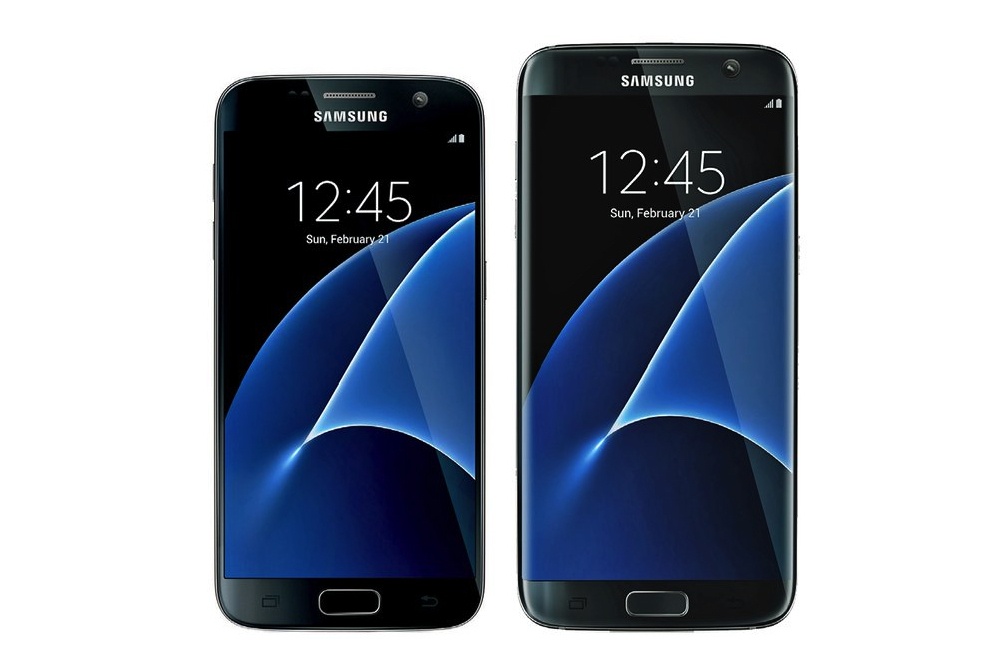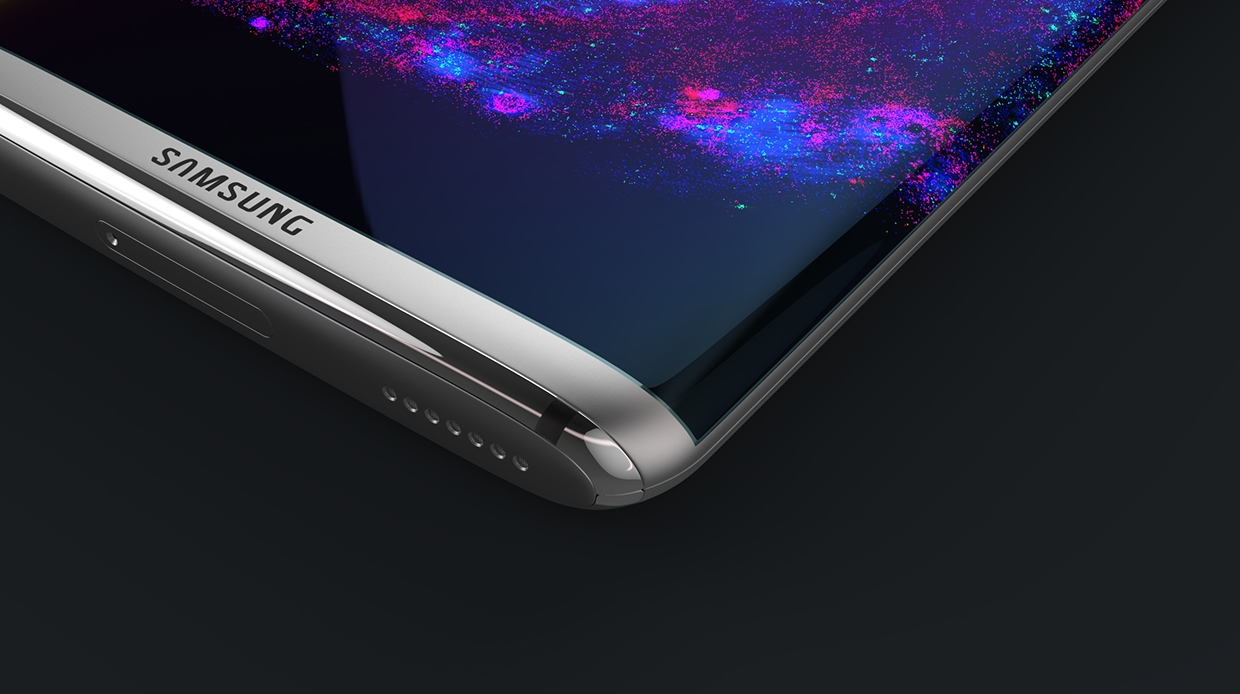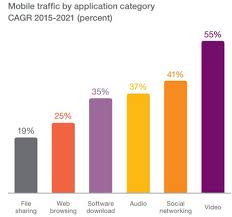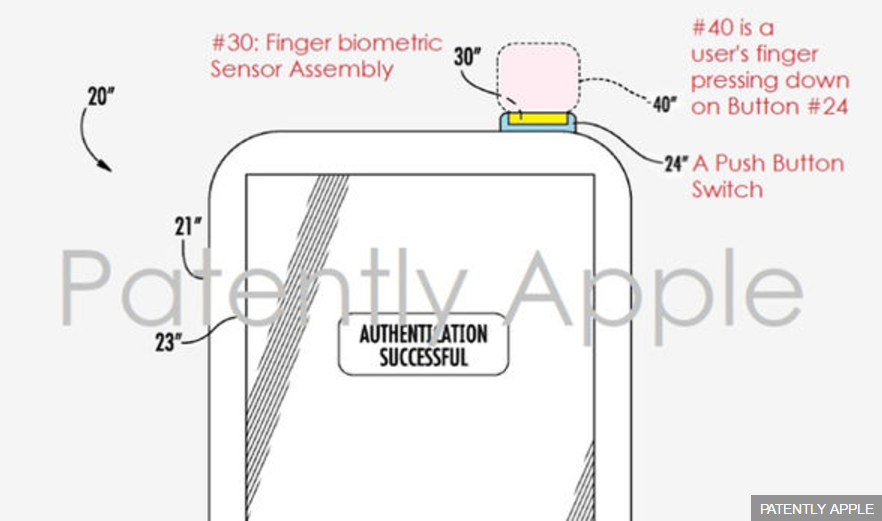Search result

An iris scanner has been beckoning for Samsung phones through rumors for a long time now and if the latest trademarks registered by Samsung at the European Union are any indication, then it will finally make its first appearance on the Galaxy Note 6.
If you are wondering what made us believe that the two trademarks are related to the biometric locking technology, let us inform you that they are quite literally termed as "Samsung Iris" and "Samsung Eyeprint."
Even though the Korean smartphone giant has confirmed absolutely nothing about the Galaxy Note 6 so far, we are pretty sure that they would not feature such a premium piece of technology on anything but a flagship device. As far as we know, there is only one upcoming flagship device from Samsung in the near future and that's the Galaxy Note 6.
After being rumoured to feature such whopping specs as a Qualcomm Snapdragon 823 chipset and 6GB of RAM, the iris scanner looks to be another feather in the next Note's metaphorical cap! If all these rumors turn out to be true, then the Samsung Galaxy Note 5 is going to be a supremely powerful device to say the least.
Author: Saikat Kar (Tech-journalist and enthusiast)

It has become quite a norm with Samsung - just before the release of major smartphones certain information gets leaked. This time around a list of Galaxy S7/S7+/S7 edge accessories have surfaced which gives out pricing info - specifically in the German market. Thanks to German WinFuture, the selection packages few major surprises.
To start off, Samsung is planning to compete with Apple by manufacturing a battery case that would look exactly like Apple's case, which will hopefully look beautiful in terms of design. The case would cost €89.99 ($99.9) which packages a battery with a capacity of 2,700 mAh with support for wireless charging. As per recent speculations, the Galaxy S7 is supposed to come with a 3,000 mAh battery and the S7+ and S7 edge are said to package a gigantic 3,600 mAh battery.
Another interesting thing in the list is the first of its kind Samsung LED View Flip Cover (€69.99, or $77.7). According to the source, the flip-type case will have LEDs which will send out notification in case of incoming calls. Finally, a Leather Cover in black and brown color will also be released during the launch.

Samsung is all over the tech-news these days, albeit for unwanted reasons. The Note 7 started exploding soon after release and now even a few of the replaced units marked as safe are also showing similar patterns. However, we have new rumors about next year\'s Galaxy S8 for you today. We are sure that the Korean electronics giant is greatly depending on the S8 to bring them out of the rut that they are quickly falling in right now.
ETNews reports that the S8 may not have a Physical Home button and instead will sport a front that's "all screen\" or "full screen" as they are calling it. It is interesting to note that the bezel-less front is also something that\'s rumoured to be a part of the iPhone 8.
Other rumors circulating around the S8 include a dual rear camera setup or a single 30-megapixel back camera, Qualcomm Snapdragon 830 (10nm)/Exynos 8895 (10nm), a 4,200mAh battery and 6GB of RAM. None of the features except the 30-mp back camera seems too farfetched though and may actually turn out to be quite accurate. Since ETNews is a reputed source, we are pretty excited to see how the S8 will look with the full screen display, if it really does happen.
Saikat Kar (tech-enthusiast)

Smartphone manufacturers are steering the industry into an era of the folding phone. Sure, the Samsung Galaxy Fold and Huawei Mate X are not available until later in the year, but they show a new direction for mobile technology. Not wanting to be left behind, Google seems to be developing its own Pixel smartphone with folding screen tech.
A WIPO Patent filed by Google and discovered by Patently Mobile shows the company is exploring bendy screens. Titled "Foldable display neutral axis management with thin, high modulus layers", the patent describes on device components that would allow a smartphone to bend.
Google's apparent entry into the foldable phone market is significant as it suggests bendy screens are here to stay. Samsung and Huawei are already on board, the two largest smartphones manufacturers on the planet. Now Google seems to also be on board, the owner of the Android ecosystem.
In fact, it really isn't any surprise to see Google move into the foldable phone market. After-all, the company has tweaked Android to provide the software underpinning for devices with bending screens.
Stopping to think about the potential, it is easy to see how folding smartphones will be revolutionary. Users can have a video chat in WhatsApp going on one side of the screen, while posting on Facebook on the other side. Or what about consuming media while also using an online service. For example, a user could be watching a ball game live on one side of the screen while making in-game bets with a New York sports betting website.

Patent Details
Google's plan for folding technology centers on Young's modulus to create layers that move independently of the neutral plane. If you are unfamiliar with Young's modulus, it is a number that measures the elastic abilities of a given material. Foldable displays are easier said than done because separate layers of the screen bend at different angles, creating a bump at the fold.
In its patent, Google has its own way of overcoming this issue. By using materials to make elasticity adjustments, the company's tech would theoretically remove the bump that is currently visible on folded smartphone screens.
The obvious question is what material will Google use? Well, the company is working with a material comprised of glass fibers and polymers for the transparent layer.
Another notable piece of information from Google's patent is that the company seems to be pursuing a clamshell design for its foldable phone. Samsung and Huawei have opted for a book style device, which would allow the handsets to be tablet sized when unfolded. Google's approach could mean a smaller device in the pocket, which unfolds to be the size of a modern smartphones.
As is always the case with patents, it is worth remembering that there are no guarantees the technology will ever be developed. Still, it does show that Google is working on folding screens and that could one day mean a folding Pixel smartphone.

Google's Pixel smartphones are loved by the excellent photography results, though the fan base doesn't feel the same about its video recording abilities. Google is making steady improvements to the video and audio recording capabilities of its Pixel smartphones. It seems like the company is listening to the feedback of its users and video creators in general.
Google started to roll out the Camera update for the handful of users earlier this year. Although, there wasn't much noticeable change in the update. The only significant change was a new listing in the settings app called "Do not disturb access needed" when the user hasn't granted the do not disturb permission to the camera app. Once you activate this option, the smartphone pauses any notification while you are recording videos, so you won't be disturbed while making the videos.
Another change is related to a new fps option in the video recording settings. Right now, Pixel 4 can go up to 30fps when recording at 4K resolution, or you can select from auto, 30fps, or 60fps while recording at 1080p resolution. Google may add a third option to the settings app and that will allow recording in 24fps. The average user records at 30fps with the occasional switch to 60fps, which is why Google has defined the auto option by default.
Another leak last week surfaced for Google's mid-range Pixel smartphone. These code-names were sunfish, redfin, and bramble. Sunfish is using the Qualcomm Snapdragon 730 processor, while the other two are powered by Qualcomm Snapdragon 765 that also supports 5G networking. These code names were spotted next to a string-valued "pixel_20_mid_range" which suggests that these are indeed related to the next Google's Pixel 4a series. It is believed that the sunfish and bramble are likely the code-names for the two Pixel 4a smartphones, Pixel 4a and Pixel 4a XL.

LTE has changed both the way and the quantity in which smartphone users consume data nowadays and recent studies suggest that it will only continue to increase. With the likes of Netflix, Spotify and YouTube being used so frequently by users all over the world, it isn't really a surprise though.
The latest Ericsson Mobility Report indicates that the monthly data consumption rate will hit the 8.9GB mark by 2021 for the average smartphone user. Considering the fact that as of now, the average monthly data consumption for smartphone users is currently 1.4GB, that is a big hike!
According to the report, the huge change will be brought forth by the following factors.
1) A significantly more number of people will start using smartphones.
2) 4G LTE will become available in areas where it was previously unavailable.
3) At least some of the carriers will make 5G speeds available to the consumers by 2020.

As one would expect, North America and Western Europe tops the chart in this report as prime data consumers, followed by Central and Eastern Europe and South America. The types of content which will be most responsible for consuming all that data are predictably, video content and social networking.
Which app hogs the most data in your smartphone?
Author: Saikat Kar (Tech-journalist and enthusiast)

The iPhone 8 is already one of the most anticipated phones of the year and given how much revolutionary the smartphone has been made out to be by fan made concepts, leaks and rumors, it would be safe to say that Apple's future flagship device has even surpassed the upcoming Galaxy Note 8 in terms of hype. People have a pretty good idea about the Note 8 because they have already seen the Galaxy S8+, but no one has ever seen anything like the iPhone OLED from Apple, given that the rumors are even remotely on track of course. To add to those series of rumors, we have another one for you today and it's a very interesting one to say the least.
The borderless OLED display which will presumably make its debut on an iPhone for the first time ever, poses one great problem which had earlier plagued (and still continues to plague) the S8 and S8+; there is no place left on the front to incorporate the fingerprint scanner. As the necessary technology for in-screen fingerprint scanners are not ready for mass production yet, Samsung has reportedly decided to go with an old-fashioned fingerprint scanner right at the centre of the Note 8's back. Apple on the other hand, has allegedly, shifted the fingerprint scanner to the iPhone 8's Power button! While Sony had placed the FP scanner at the side of its smartphones before, Power button integration for the security measure would indeed be a first.
Saikat Kar (tech-enthusiast)
© 2023 YouMobile Inc. All rights reserved






